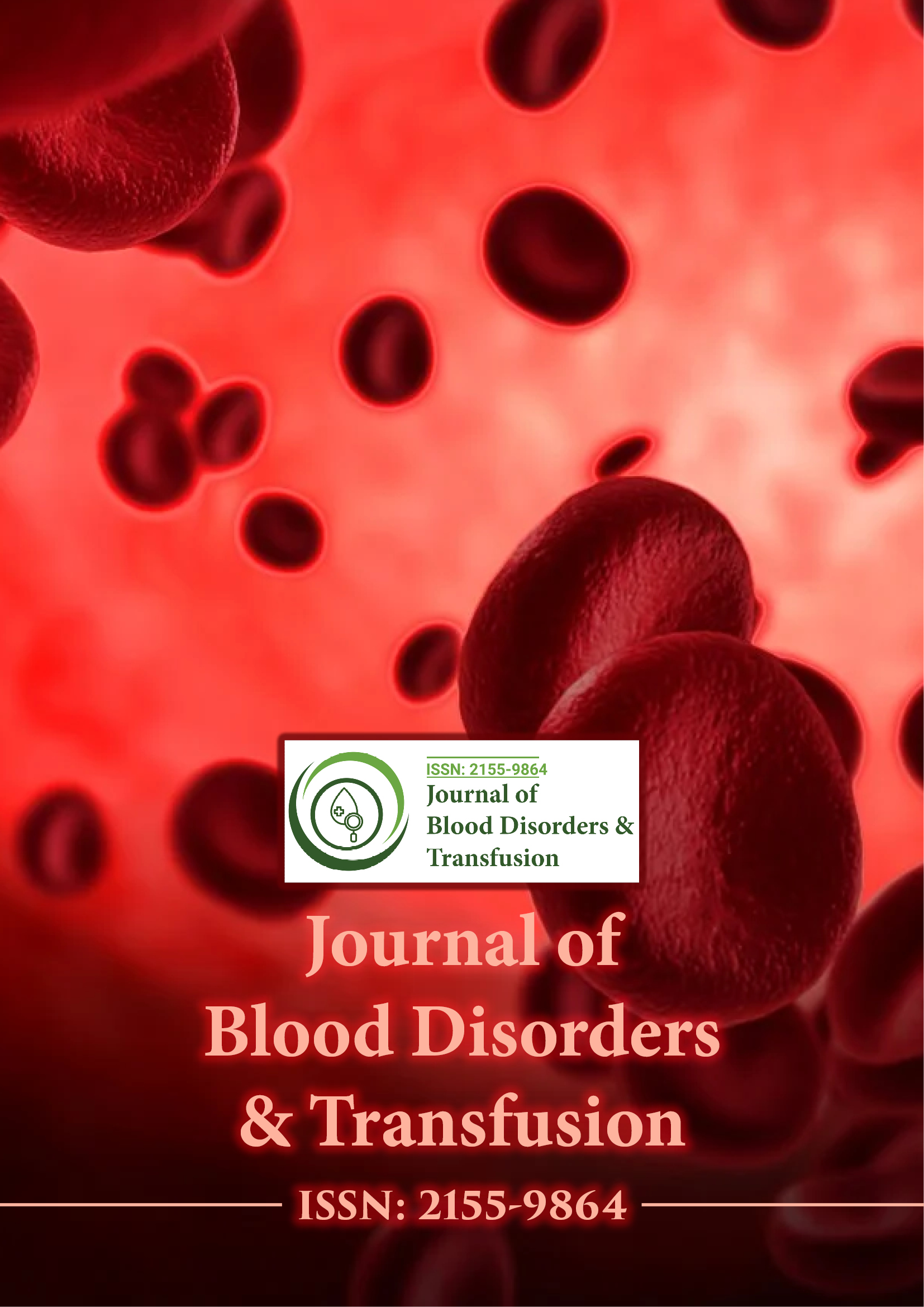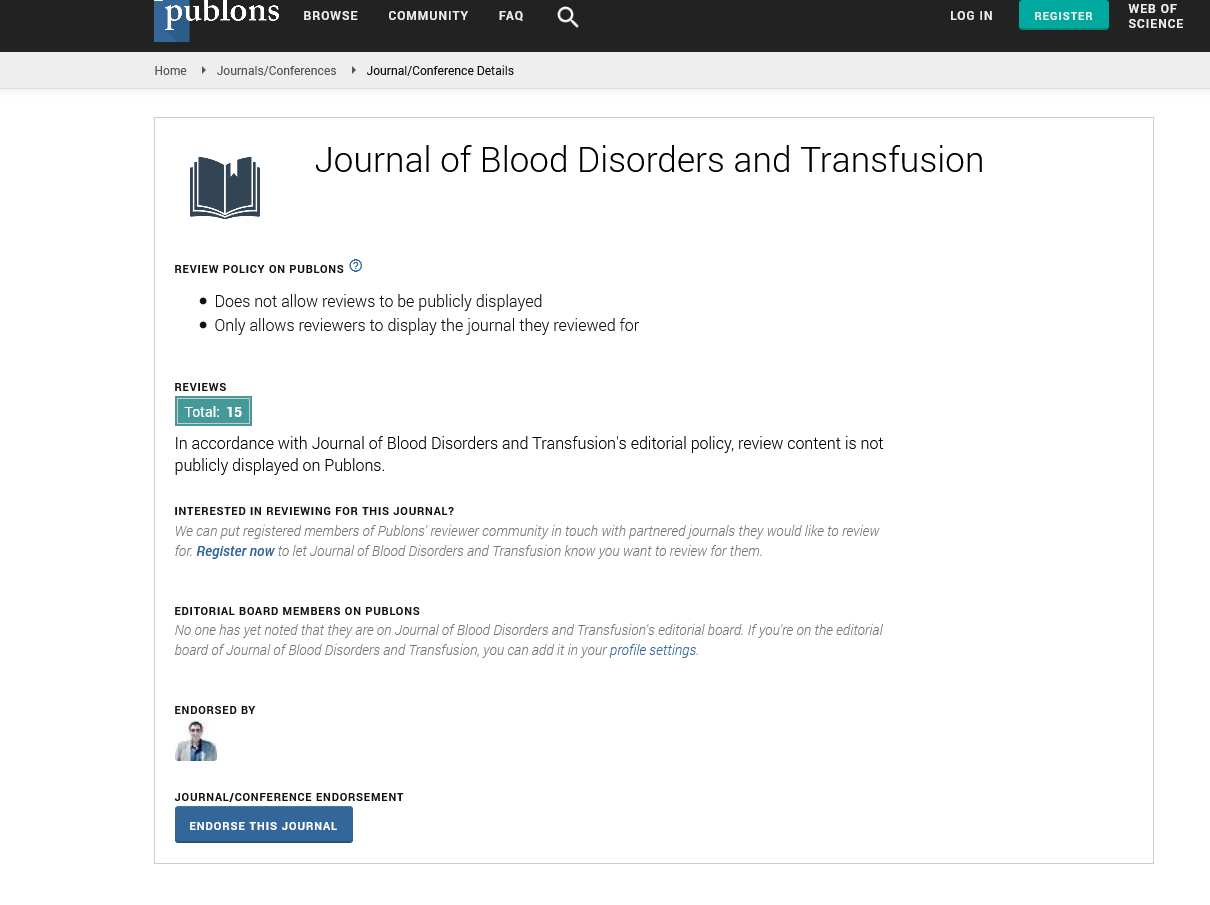Indexed In
- Open J Gate
- Genamics JournalSeek
- JournalTOCs
- Ulrich's Periodicals Directory
- RefSeek
- Hamdard University
- EBSCO A-Z
- OCLC- WorldCat
- Proquest Summons
- Publons
- Geneva Foundation for Medical Education and Research
- Euro Pub
- Google Scholar
Useful Links
Share This Page
Journal Flyer

Open Access Journals
- Agri and Aquaculture
- Biochemistry
- Bioinformatics & Systems Biology
- Business & Management
- Chemistry
- Clinical Sciences
- Engineering
- Food & Nutrition
- General Science
- Genetics & Molecular Biology
- Immunology & Microbiology
- Medical Sciences
- Neuroscience & Psychology
- Nursing & Health Care
- Pharmaceutical Sciences
Acute reactives and markers of inflammation in venous thromboembolism disease: Clinical and evolution outcomes
2nd International Conference on Hematology & Blood Disorders
September 29-October 01, 2014 DoubleTree by Hilton Baltimore-BWI Airport, USA
Pablo Javier Marchena Yglesias
Scientific Tracks Abstracts: J Blood Disorders Transf
Abstract:
Background: Chronic inflammation is a risk factor for atherosclerosis and elevation of inflammatory markers are associated with coronary events. This relationship is demonstrated in less venous thromboembolism disease (VTD). Interleukin 6 (IL-6) is a cytokine that promotes coagulation without affecting fibrinolysis by stimulating prothrombotic factors (factor VIII, platelets, fibrinogen) and reduced levels of inhibitors such as antithrombin III hemostasis and protein S. Meanwhile, interleukin 8 (IL -8) is a cytokine that stimulates the adhesion of neutrophils to vascular endothelium by activation of integrins wall. Its production is mediated by IL - 1β and tumor necrosis factor α and any other viral or bacterial stimulation. Objective: To assess the association of acute reactants (CRP, ESR a D-dimer) and interleukin 6 and 8 (IL-6 & IL-8) at diagnosis of venous thromboembolic disease (VTD) and clinical outcome. Methods: 100 patients were diagnosed of VTD by image tests. Acute reactants (C-reactive protein (CRP), erythrocyte sedimentation rate (ESR), fibrinogen), D-dimer and IL-6 and IL-8 were measured at the moment of diagnosis. A 12 month follow-up of these patients to notice any clinical evolution outcomes (recurrences, bleeding, postphlebitic syndrome, death) were made. Results: IL-6 was increased in 9 patients and IL-8 in 3. The risk factors, time to diagnosis and pulmonary embolism rate were similar in both interleukin groups (normal and high levels). Fibrinogen levels were significantly increased in high IL-6 group (585?179 vs. 485?154 mgr/dl; p=0.05). During follow-up there were 5 deaths, 3 recurrences, 11 bleedings and 43 post- phlebitic syndromes. Normal ESR level was associated to postphlebitic syndrome (17.8?14.5 vs. 31.4?27.4 mm/1st h; p=0.016). Patients who had high levels of IL-6 had worse survival than these with normal levels (p=0.015). Conclusion: IL-6, ESR, and CPR at diagnosis of VTD could be useful to identified patients with higher risks of death and postphlebitic syndrome during the first year after diagnosis.
Biography :
Pablo Javier Marchena Yglesias completed his studies at the School of Medicine, Universidad de Barcelona in 1997 and is presently doing his PhD at Universidad Aut?noma de Madrid. He has published more than 50 papers in reputed journals on relationships with venous thromboembolism disease and participated in several trials with new oral anticoagulants. He is an active member of RIETE Registry (Registro Informatizado de la Enfermedad Tromboemb?lica) within numerous conferences.

